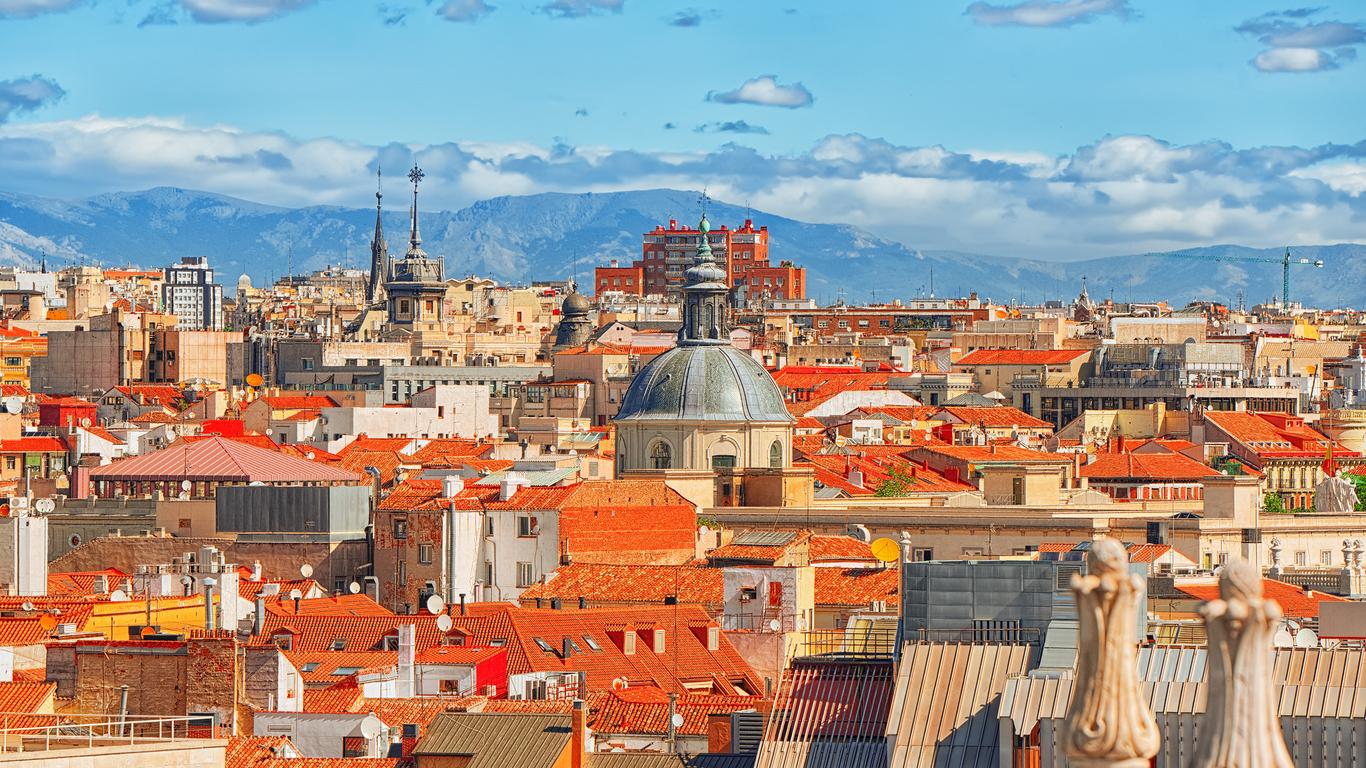Madrid Barajas Airport is Spain’s largest and busiest airport with over 47 million passengers arriving each year. The airport’s location, just 9 kilometres from the central financial district of Madrid, ensures all of the major attractions of the capital are within easy access.
Before departing Madrid Barajas Airport, explore the boutiques and retail stores inside the terminal building. Terminal 4 has the largest collection of stores, where gifts, fashion and souvenirs can be purchased. The cafes and tapas bars are an ideal place to indulge in typical Spanish dishes, alternatively, fast food outlets are readily available. When all of the amenities of Madrid Barajas Airport have been exhausted, there are many attractions close by to discover. Parque El Capricho is a little known 14-hectare garden close to Barajas. The landscaped gardens host a labyrinth, a palace, the site of a former bullfighting ring and many sculptures. Take a relaxing walk or enjoy a picnic or cycle ride along the tree-lined pathways. Visitors interested in exploring Madrid culture can head to the city centre. The world famous Prado Museum, Palace of Reina Sofia and the Thyssen-Bornemisza Museums are 45 minutes’ journey away. The largest park in Madrid, El Retiro is located in the centre of the city close to the city’s Golden Triangle of Art. Explore the Crystal Palace, the regal monument dedicated to Alfonso XII and pretty, flower-lined Avenida de México. Alternatively, visitors can enjoy a boat ride on the tranquil lake. Gran Vía is one of the busiest streets in Madrid with designer boutiques, restaurants, majestic architecture and some of the best nightlife in the country.
The airport terminals of Madrid Barajas are connected by a 24-hour free bus service which allows passengers to transfer from one terminal to another. Metro lines operate into Madrid City Centre and Airport Express buses are great for early hour departures. The journey from the airport to Madrid Atocha rail station takes approximately 40 minutes and runs several times an hour. Terminal 4 offers a Metro Ligero,a light rail service into the city. Taxis are a reasonably priced option for those who are in a hurry to reach their destination.
Constructed began in 1927 and Madrid Barajas Airport opened to International air traffic just four years later. The first International flights in the 1930s served many European and African destinations. During the early 1980s, two further runways were built to accommodate additional flights arriving for the 1982 FIFA World Cup. Today, Madrid Barajas is the main hub of Spanish commercial carrier Iberia, with the airline accounting for over 60 percent of the airport’s traffic.





